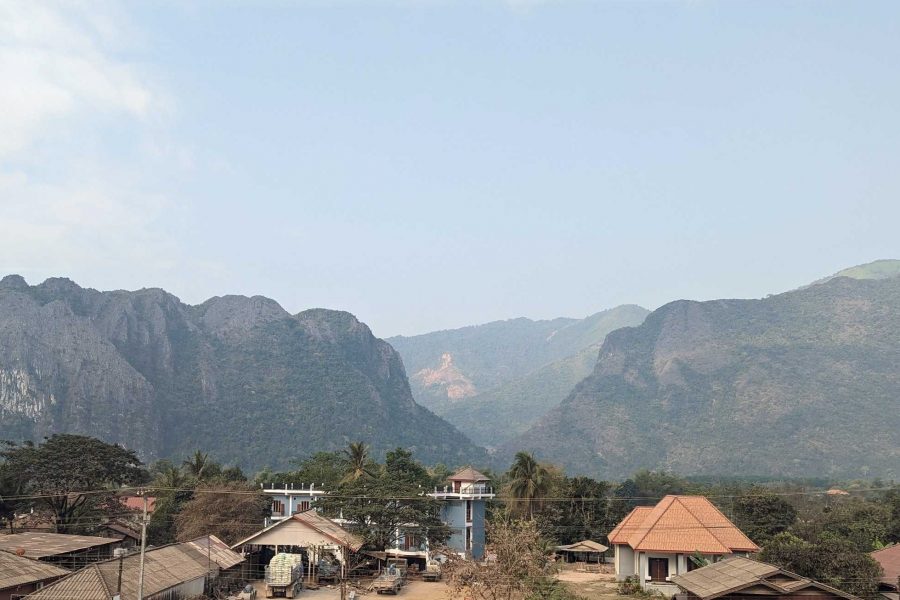
JAL Impacted by Catering Strike, Offers Bento on Two North American Routes

The Lao People’s Democratic Republic, surrounded by Thailand, Vietnam, Cambodia, Myanmar, and China, is a landlocked country. The capital, Vientiane, is about 4,000 kilometers away from Tokyo by direct distance, and it’s close to Hanoi in Vietnam and Bangkok in Thailand.
Due to its mountainous and highland terrain, and as a landlocked nation with no sea access, Laos has been one of the poorest countries in Southeast Asia due to its lack of access to goods. However, hearing that this situation is changing, I headed to Laos.
The China–Laos Railway connects Vientiane with Kunming, Yunnan Province in China. China assisted with their technology and in construction for Laos, which had no railway running across the entire country. For China, this marks the first operation of high-speed railway across a national border (technically, a semi-high-speed railway with a speed limit of 160 km/h).
Unlike Japan’s Shinkansen, one distinctive feature of China’s high-speed trains is that they share the tracks with freight trains. The China–Laos Railway also operates for both passenger and freight services, enabling movement between the two countries not just for people but also for goods. Along with concurrently planned and under construction highways, a major artery is being formed between China and Laos, bolstering China’s Belt and Road Initiative.
However, due to the COVID-19 pandemic, while freight trains conduct direct operations across the border, passenger trains had been operating only within China and Laos separately, under an enhanced quarantine system. With the waning of the pandemic, the long-awaited direct passenger train service commenced in April 2023.
In February 2023, the author made their way to Laos, capturing the moment when travel to various countries was gradually becoming possible again. While initially travel to China was not yet realistically possible, by the time of writing, travel is back to pre-pandemic levels in most countries. The exchange between nations is expected to become more active and the context of people’s mobility to rapidly evolve.
In this article, I want to take you through the situation on the Laos side of the China–Laos Railway in February 2023, just before the start of direct passenger train operation.
Living in Tokyo, I first had to get to Laos. Since there are no direct flights from Japan to Laos, I accessed Bangkok, Thailand by air, and from there, transferred to an overnight sleeper train to Nong Khai, a border town with Laos.
I’ll spare the details as this article is about the China–Laos Railway, but the overnight train from Bangkok to Nong Khai is comfortable incarnate. The second-class cars are air-conditioned two-tiered sleepers. The beds are placed parallel to the tracks, allowing bottom bunk passengers to enjoy views of Thailand’s landscape through the windows. In contrast, the sleeper trains in China have three-tiered beds parallel to the sleepers, but Thai Railways’ second-class might be more comfortable when compared. There’s more room in the beds, and even someone as tall as myself felt hardly cramped.
In Nong Khai, I transferred to a border train to Laos. It’s a compact configuration of two passenger coaches hooked to a locomotive. While I had heard that it might be combined with a freight car, it was just the locomotive and two coaches on that day. There appeared to be about 20-30 passengers who seemed to have gone through the same itinerary, plus a mysterious group of over ten cyclists. It seems they were ‘bagging’ their bikes, which makes sense as the bridge crossing the border is limited to automobiles and trains. The station was delayed for about an hour, even though it was the starting point, as all passengers needed to wait to complete Thai departure procedures.
The rare mixed-use bridge was crossed to pass the border. Though it’s termed mixed-use, it still blocks vehicular traffic when the twice-daily train services run, so it is more spatially shared rather than temporally.
I arr… (cut due to character limit)